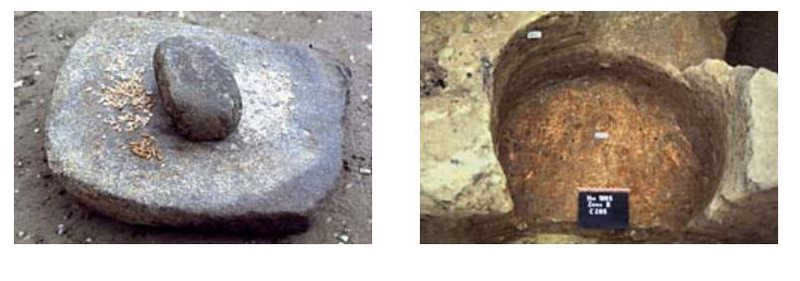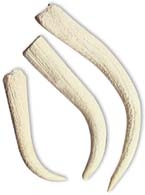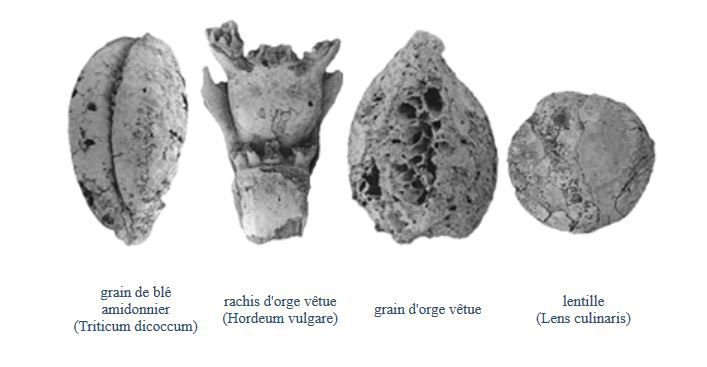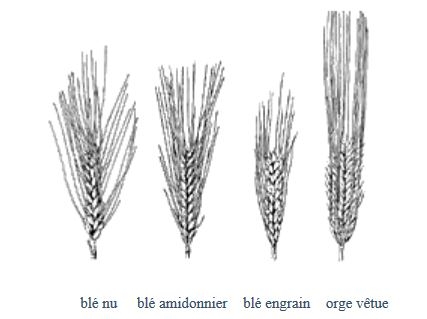- Home
- Hârsova, the chalcolithic village
- Sustenance
- Agriculture
A rectangular millstone and crude pestle made of sandstone intended for grinding of seeds. The discovery of milling tools in itself is, however, not formal proof of the practice of agriculture, but only an indication that grain was part of the diet.
This cylindrical pit, 80 cm in diameter, with wooden bottom, was probably used as a small silo to preserve foodstuffs such as seeds.
Picks made of elk antlers : fitted with handle, served as a tool for burrowing.
At Hârsova, as regards the Gumelnita culture, there is indirect evidence of agriculture found in agricultural tools (picks made of elk antlers and elements of flint sickles), of flour-milling (grinding stones with grains) with a pit hearth which may have been used in the processing of grain and a small silo ditch allowing the storage of grain and the conservation of foodstuffs. There is also direct evidence of agriculture at Hârsova in the Gumelnita culture found in the charred remains of seeds and the domestic waste of crop plants.
Charred fruits and grains discovered at Hârsova found in an oven, scanning electron microscope (7.5X) .
Species and variety chart of grain cultivated by the Gumelnita culture at Hârsova.



